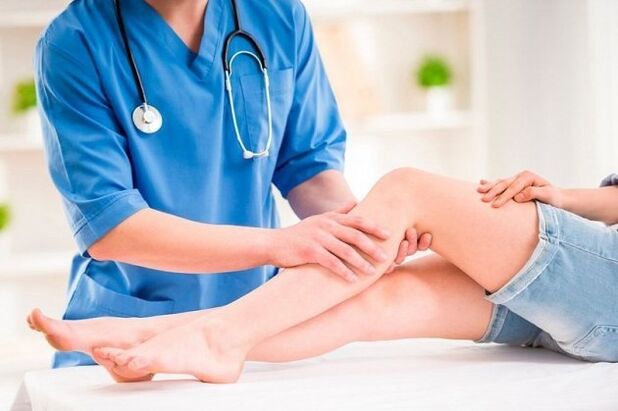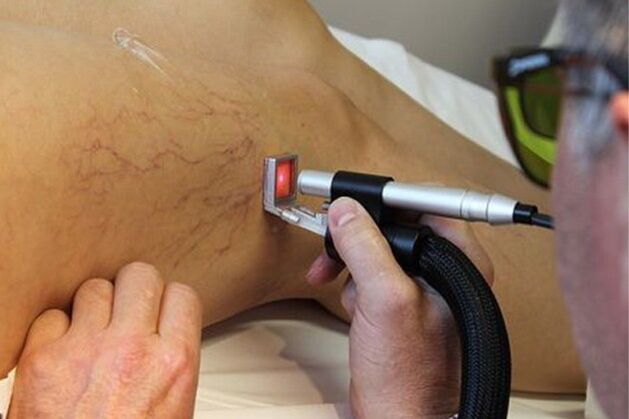Varicose veins treatment methods differ in the intensity of their effect on the pathological problem and the effect on the human body as a whole. Varicose veins are swelling of subcutaneous veins with acute blood circulation disorder. Venous plexuses in the affected area become curved and acquire a blue color.

Compression form
Shapewear is a component of therapy for varicose veins at any stage. In the early stages of pathological development, compression stockings can stop the progression of the disease and restore the former beauty of the legs.
There are several types of knitting:
- knee socks, tights, stockings;
- elastic bandages.
All of them are classified according to the degree of compression, production material and manufacturer. Considering that therapeutic underwear should be worn regularly, it is better if the type of compression is chosen by the doctor. Compression stockings and tights can be worn for prevention, especially if the risk of developing varicose veins increases.
Medicines
Conservative treatment refers to non-invasive correction methods. The average course is 2-3 months. During therapy, swelling and inflammation decrease, venous protrusion decreases. It is important to combine local and systemic treatment with compression stockings. Drug correction makes it possible to eliminate varicose veins in the hands and feet due to the possibility of a systemic effect on the body.
Pills
Tablets are widely used in complex therapy. In addition to tablets, systemic treatment may include injections and capsules. Effective and well-known drugs are:
- blood thinners;
- anti-inflammatory;
- phlebotonics.
Local therapy
Ointments, liniments and gels are used as local remedies for varicose veins. Local drugs are suitable for use in home therapy. Medicines eliminate swelling and burning in the area of venous protrusion, reduce cyanosis and relieve pain.
The following popular drugs are distinguished:
- based on glycosaminoglycan;
- based on natural ingredients (horse chestnut, sweet clover, butcher's broom);
- non-steroidal anti-inflammatory drugs;
- hormonal.
Treatment with leeches
In phlebological practice, hirudotherapy (treatment with leeches) is absolutely justified. The positive effect of therapy is caused by the following positive aspects:
- elimination of tissue swelling;
- blood thinning;
- prevention of thrombosis;
- reduction of pain;
- strengthening of vascular walls.
Conducting venosclerosis therapy

A common method of treating varicose veins is used in the early stages of the disease. The effect of the procedure is noticeable after 1-3 sessions. There are two main different options for sclerotherapy.
Puncture method
It is an injection treatment of veins in the affected area. In some cases, patients may be prescribed IV medications. The following drugs are used for intravenous administration:
- platelet disaggregants (for blood thinning);
- thrombolytic agents (to dissolve existing blood clots);
- drugs to improve blood microcirculation.
A synthetic analogue of natural prostaglandin E is used for severe forms of varicose veins1. Not all patients require puncture and injection treatment. The suitability of the method is determined by the doctor.
Radiofrequency ablation
The method was taken from cardiac surgery, where it is still successfully used to improve heart rhythms in affected areas of the heart. Radiofrequency ablation literally means vaporizing matter. The method is based on the use of current with a force of up to 750 kHz. It is delivered into the venous lumen using current catheterization. Under the influence of current at a temperature of 120 ºС, the walls of the vessels stick together.
Obliteration differs from classical sclerotherapy in that there is no need to apply special adhesives.
Surgical correction
Surgical treatment is a radical method of treating varicose veins when conservative therapy is ineffective and the pathology rapidly progresses to healthy areas of the lower extremities.
The following methods are used for complete restoration of the affected veins:
Phlebectomy. Surgery to remove damaged veins. Duration - about 1. 5 hours, performed under general anesthesia. The recovery period can last up to 3 months. There is a risk of permanent scarring after surgery.Electrocoagulation. The method is based on the cutting of tissue by evaporation of moisture under the influence of direct currents. The effectiveness of the method depends on the depth of exposure to high-frequency currents. Coagulation is used in the treatment of blood vessels, warts, hemorrhoidal diseases and papillomas.Cryosurgical treatment. It is a widely used treatment method. Treatment is based on the effect of high temperature on the affected vessels. Under the influence of cold, the body begins to defend itself, which is expressed by the activation of regenerative processes in damaged tissues. 3-5 sessions will be required for best results. It is used for reticular varicose veins (stage I), as well as for venous diseases of the 2nd and 3rd degree.Sclerobliteration. A simple and effective procedure involving the puncture of varicose veins. At the site of injury, the endothelial layer is disrupted and fibrous tissue is formed. With proper compression, the damaged and fibrous vascular walls grow together and the vascular lumen is completely closed. The procedure consists of 5-7 courses, but after treatment, the probability of the complete disappearance of the affected vessels increases significantly.Endoscopic dissection. The method is one of the types of subfascial ligation. In other words, the affected vessels are closed (cut) using endoscopic instruments without a remote surgical approach. After the procedure, no marks or scars remain.Laser treatment. An effective, highly accurate and safe method for removing affected veins. All treatment consists of local heating of the venous walls and their subsequent sclerosis. The advantage of the method is that only one procedure is required.

An innovative treatment can be used to treat varicose veins in children with obesity and endocrine diseases.
Traditional methods
There are several recipes used to improve the general trophism of tissues and blood vessels:
- essential oils;
- Apple cider vinegar;
- raw potato applications;
- aloe juice for ulcerative formations;
- cabbage leaf;
- apitherapy - treatment with bee products.
It is possible to use drugs to increase immunity and increase vascular elasticity. Official medicine does not consider such drugs therapeutic and effective.
Life style
In the absence of varicose veins, a number of recommendations should be followed to prevent the disease. If you have varicose veins, changing your lifestyle and following your doctor's instructions will reduce the risk of the pathology spreading to healthy veins:
- active lifestyle;
- elimination of bad habits;
- charging while standing for a long time;
- wear comfortable shoes (you can replace heels with wedges several times a day);
- a balanced diet to prevent constipation;
- weight correction with increased body mass index;
- compliance with the drinking regime;
- regular exercises to treat varicose veins.
When varicose veins progress and without adequate therapy, they can be dangerous due to the risk of blood clots, trophic ulcers and even gangrene. Varicose veins are often accompanied by diabetes mellitus, so when the first signs of pathology appear, it would be good to visit an endocrinologist and rule out various hormonal disorders.

















